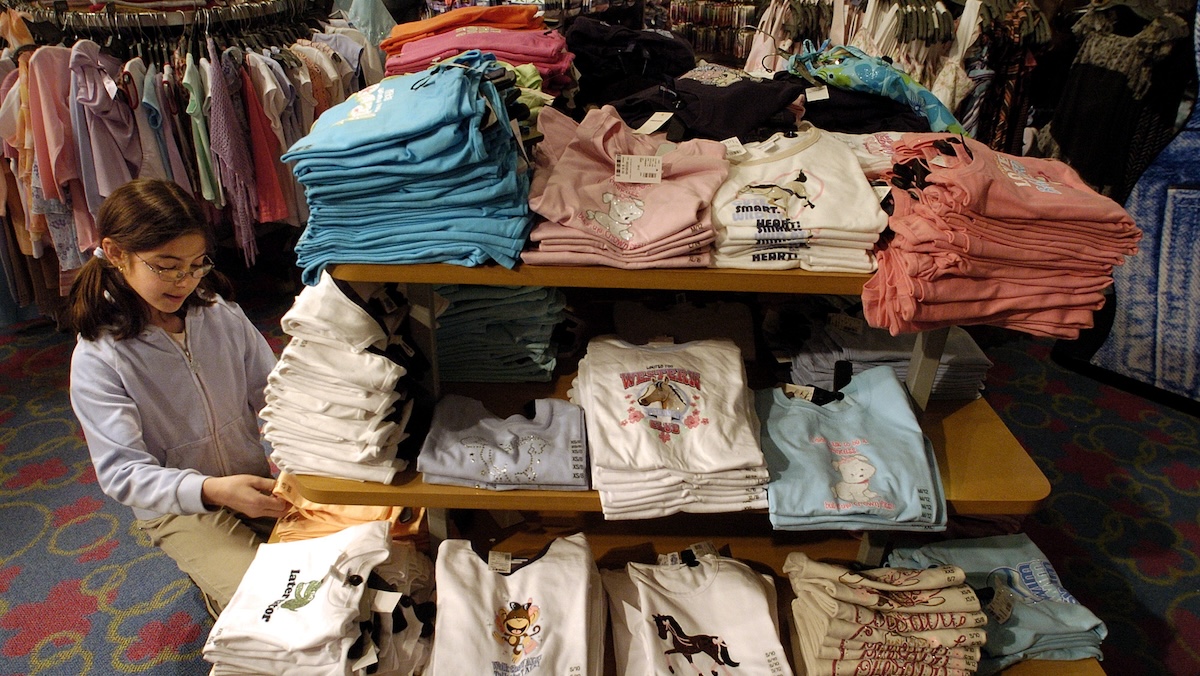It is the one and only thing you buy for a price that includes a fraction of a penny. You can't eat it. You can't drink it. You can't put it in the bank and it does not appreciate in value. You use it up almost immediately.
It's gasoline. And the pricing scheme is one of the most bizarre of any consumer product you buy.
Think about it. Every time you fill up, you pay a price which always has an extra "9/10" of a penny tacked onto the end. You stick your card in the pump and push the buttons and never think about the fact, that all of those fractions of a penny start to eventually add up.
Most everyone in the industry, even those in the oil companies, tell us they have no idea why the "9" is still there. "It's been there for years," says Doug Fuller, whose family has operated gas stations in west suburban Hinsdale for 65 years. "The whole industry does it, so we just go with it!"
Business
But why do we pay it? Come to think of it, why don't we even question it?
Here at Good Question Central, we've learned that the answer is: marketing. Put very simply, $2.29 9/10 sounds cheaper than $2.30. Even though it's only a tenth of a cent. Even though, when you fill up a 16 gallon tank, you're only talking about 14 cents difference.
But does it have anything to do with the way actual petroleum, actual gasoline, is priced to the retailer?
"Absolutely not!" says Phil Flynn, of ATD Trading. "Really it's more of a tradition." Flynn, who watches energy markets at the Chicago Board of Trade, says there is no reason, as far as the market is concerned, why gasoline should be priced in such a perplexing fashion.
"Really, that is a tool by the retailers," he says. "You know, to try to stay competitive and stay in the market. It's a habit that they picked up many years ago, and it's been one that's been hard to break."
And in a competitive business like gasoline stations, which often are across the street from each other, it would be foolish for one operator to sell his gas for $2.30, while the guy on the next corner is selling it for $2.29 9/10.
Back at Fuller's service station in Hinsdale, Doug Fuller says he actually doesn't make that much money on gasoline. "We make our money on our chips," he says, pointing to the convenience store inside. "Soda, hot dogs, and cigarettes. There's no margins in gas."
So why not just drop the nine, round it off, and call it a day?
"I think that'd be more truthful," Fuller says. "Do you know anyone who's doing it?"
We found one. Jim Davis, of Palo Alto, California. Three years ago, Davis, declaring that the little nine was nonsense, dropped it from the signs at his Valero station, and began rounding down to the nearest penny. At first he says, no one noticed. Then, a local newspaper reporter did a story on Davis's pricing plan, and suddenly his clientele began to perk up.
"I had very positive reactions from the pricing, which go on, to this day," he said.
Pointing to the signs on his pumps stating "no 9/10", Davis said, "People do notice!"
But does that nine tenths of a penny make any difference to the industry? The experts say, absolutely.
Northwestern University Marketing professor Eric Anderson says the human brain ends up doing part of the work. You see $2.81 9/10 on the sign. But you subconsciously drop the 9, and truncate the price to $2.81, even though it is much closer to $2.82. There is an entire science in the marketing world involving what is known as "nine dollar endings". "Nine is associated with low price," he says. But in this case, Anderson says the distraction of the lower number to the left, is actually more important. You are really paying the higher price. But you don't think you are.
Dr. Kyle Dean at Oklahoma State University's center for applied economic research agrees that when it comes to selling gas, the profit margins are slim.
"Gasoline isn't where they make the bulk of their money," he says. Thus, a perception on the sign out front that there is even a penny in savings, can be important.
"When you fill up your tank," he notes, "most people aren't brand loyal; they're price loyal."
In other words, if they're going in to buy a gallon of milk, they'll fill up the car at whichever convenience store saves them a penny on gas. Conversely, if they like the store and it's convenient to enter and exit, they might pay more.
That penny, which only adds up to about 14 cents a tank.
By the way, you absolutely cannot go into a service station and buy exactly one gallon of gas at the advertised price. Even if you could pump it to the exact drop, the pumps are calibrated to round to the nearest cent. Otherwise, even if you bought say, 12 gallons at $2.50 and 9/10, your price would come out at $30.108.
You probably don't carry that kind of change.
In the average fill-up, those little fractions may not mean much, but for the industry at large, the pricing sleight-of-hand pays off in a big way. In 2007, 142 billion gallons of gasoline were sold in the United States. At 9/10 of a cent per gallon, the industry generated an extra $1,278,000,000.
And that's why you pay it.



